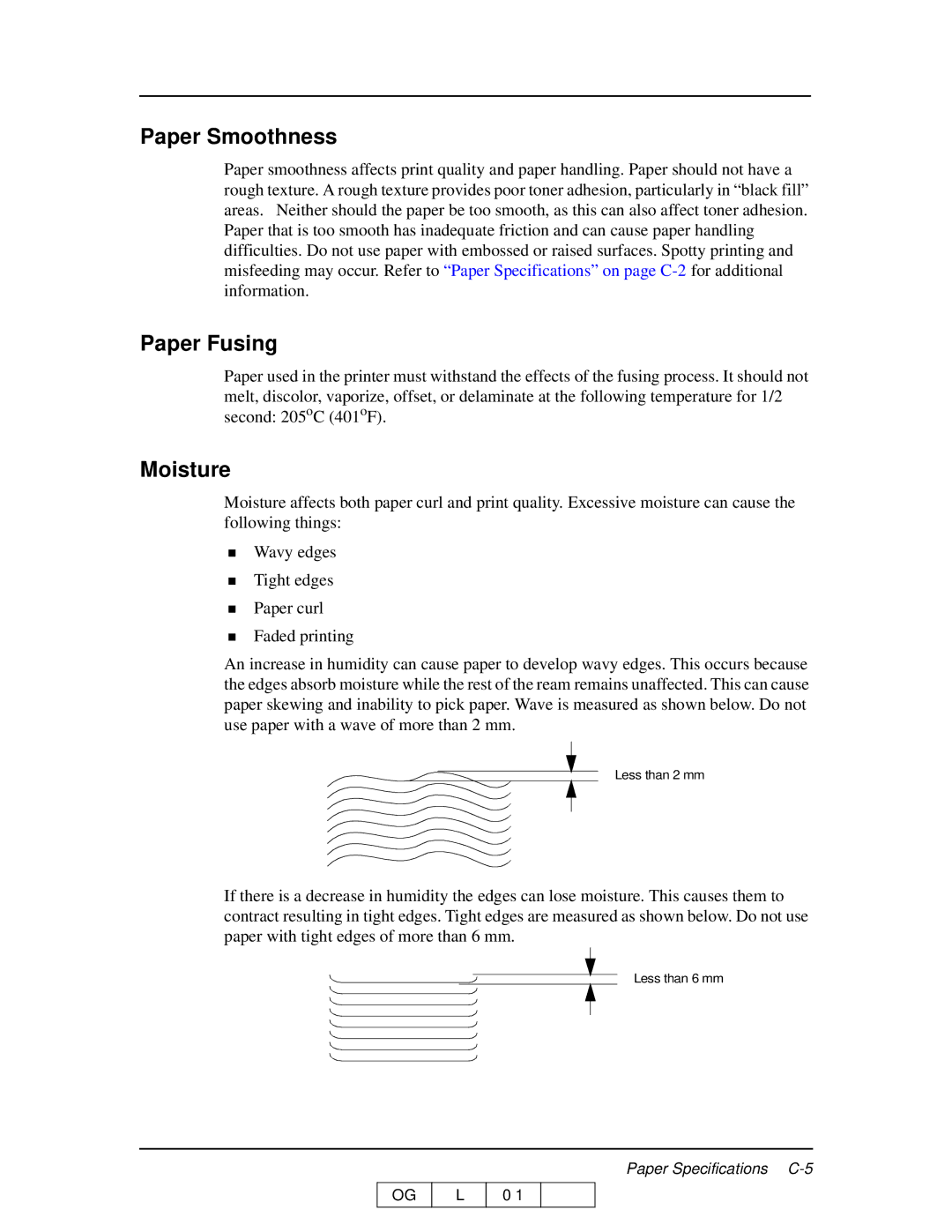
Paper Smoothness
Paper smoothness affects print quality and paper handling. Paper should not have a rough texture. A rough texture provides poor toner adhesion, particularly in “black fill” areas. Neither should the paper be too smooth, as this can also affect toner adhesion. Paper that is too smooth has inadequate friction and can cause paper handling difficulties. Do not use paper with embossed or raised surfaces. Spotty printing and misfeeding may occur. Refer to “Paper Specifications” on page
Paper Fusing
Paper used in the printer must withstand the effects of the fusing process. It should not melt, discolor, vaporize, offset, or delaminate at the following temperature for 1/2 second: 205oC (401oF).
Moisture
Moisture affects both paper curl and print quality. Excessive moisture can cause the following things:
Wavy edges
Tight edges
Paper curl
Faded printing
An increase in humidity can cause paper to develop wavy edges. This occurs because the edges absorb moisture while the rest of the ream remains unaffected. This can cause paper skewing and inability to pick paper. Wave is measured as shown below. Do not use paper with a wave of more than 2 mm.
Less than 2 mm
If there is a decrease in humidity the edges can lose moisture. This causes them to contract resulting in tight edges. Tight edges are measured as shown below. Do not use paper with tight edges of more than 6 mm.
Less than 6 mm
OG
L
Paper Specifications
0 1
